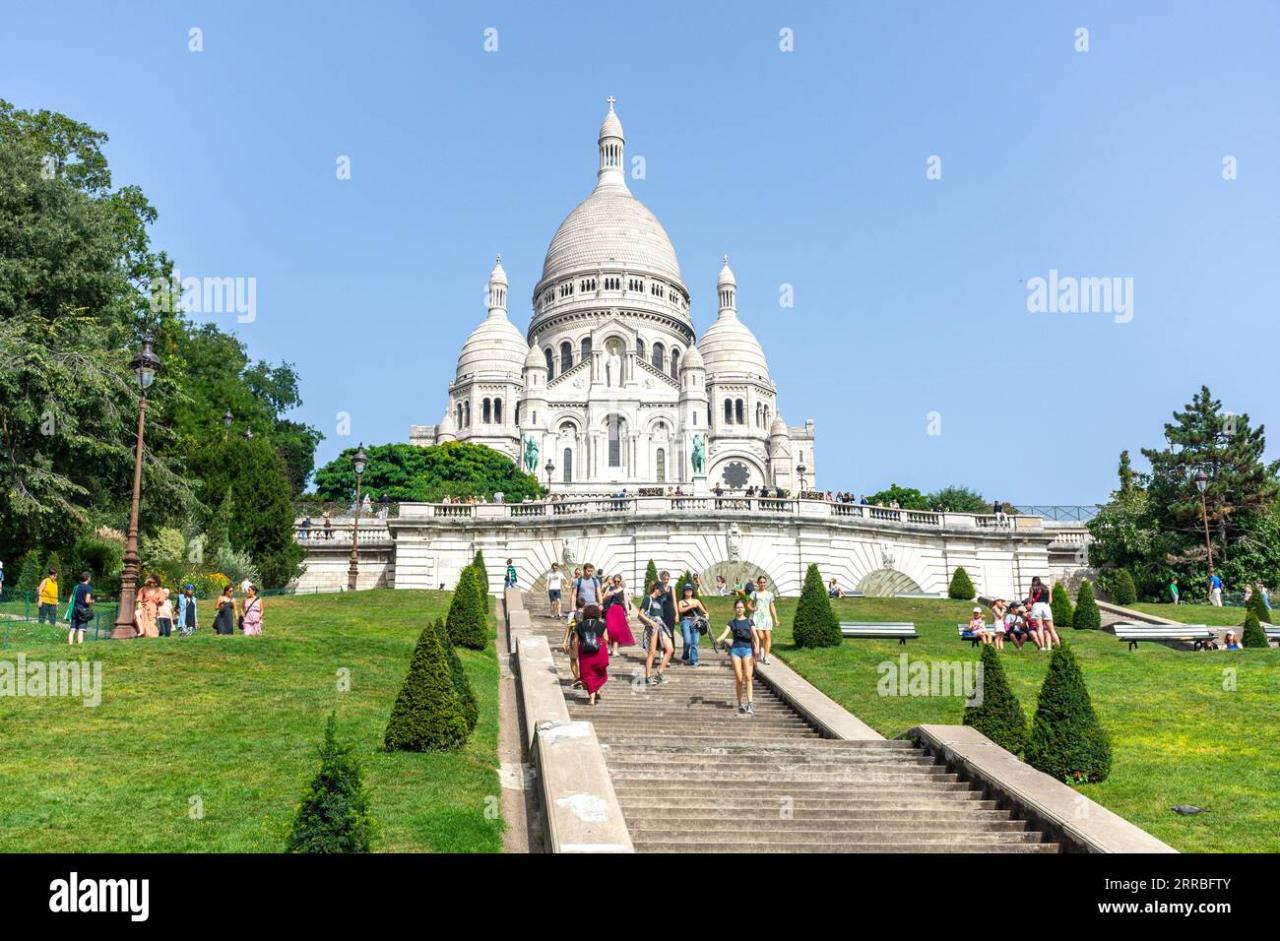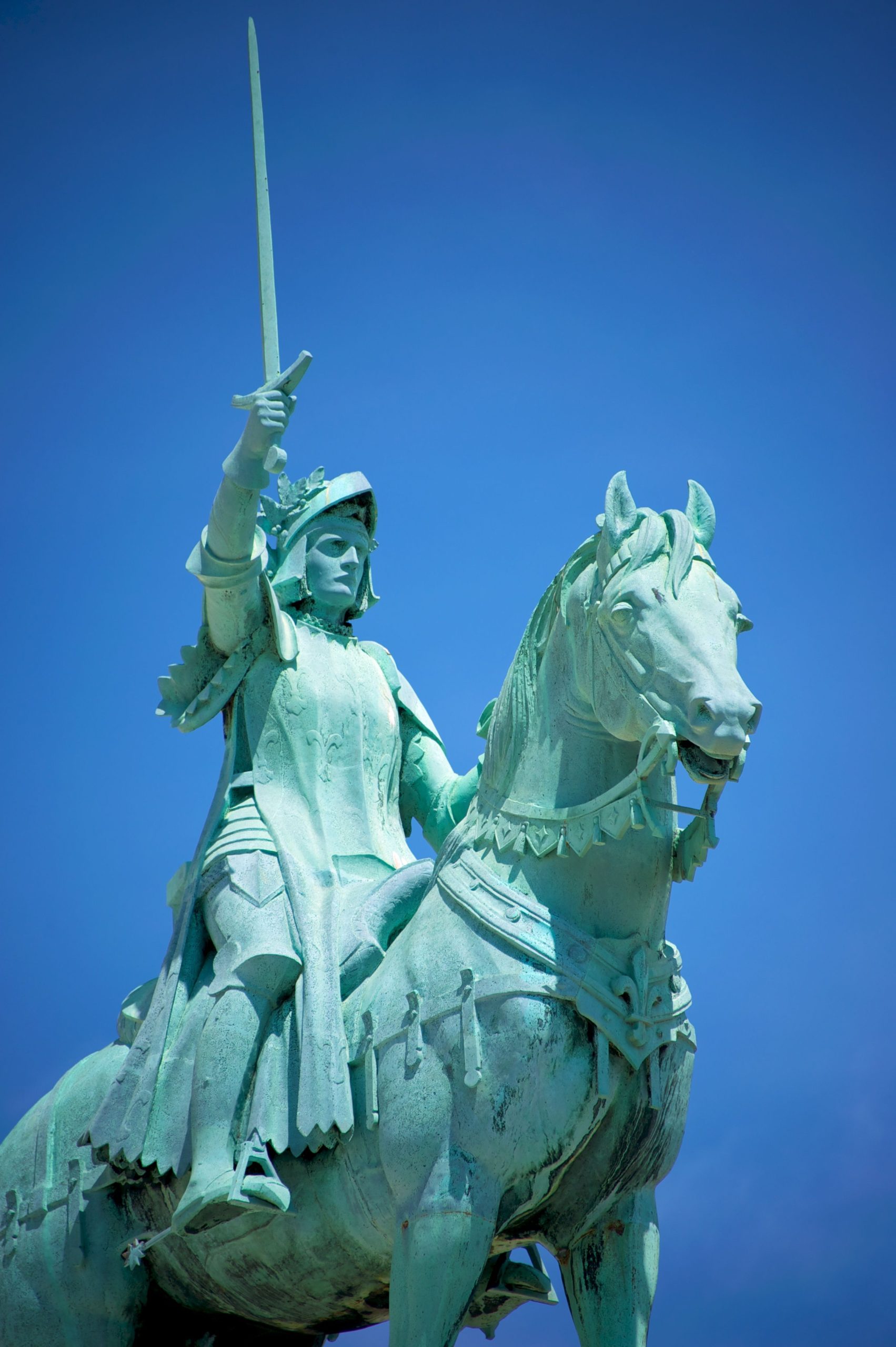Perched atop the highest point of Paris, the butte of Montmartre, stands the Basilique du Sacré-Cœur (Sacred Heart Basilica), a dazzling white monument that is as much a symbol of the city as the Eiffel Tower. More than just a stunning architectural feat, the Sacré-Cœur is a pilgrimage site, a place of worship, and a treasure trove of art, history, and breathtaking panoramic views. Visiting this iconic basilica is an experience that transcends the purely aesthetic, offering a glimpse into the soul of Paris and the enduring power of faith.
A History Etched in Turmoil and Hope
The story of the Sacré-Cœur is deeply intertwined with the tumultuous events of 19th-century France. Following the Franco-Prussian War (1870-1871) and the subsequent upheaval of the Paris Commune, a national vow was made to erect a church dedicated to the Sacred Heart of Jesus. This vow was intended as an act of atonement for the perceived moral failings of the nation, and as a symbol of hope for the restoration of order and spiritual renewal.
The project was officially sanctioned by the National Assembly in 1873, and the design was entrusted to the architect Paul Abadie. Abadie envisioned a Romano-Byzantine style basilica, a departure from the Gothic architecture that dominated many of Paris’s other prominent churches. The construction of the Sacré-Cœur began in 1875 and continued for nearly half a century, finally being completed in 1914, just before the outbreak of World War I. It was officially consecrated in 1919, after the war had ended.
A Visual Symphony of White Stone and Byzantine Influence
The Sacré-Cœur is a masterpiece of architectural design, characterized by its dazzling white façade, its distinctive dome, and its intricate sculptural details. The basilica is constructed from Château-Landon stone, a type of travertine that hardens and bleaches over time, giving the Sacré-Cœur its characteristic luminous appearance.
-
Exterior Majesty: The exterior of the Sacré-Cœur is a visual symphony of curves, domes, and arches. The central dome, rising to a height of 83 meters (272 feet), dominates the skyline and offers unparalleled panoramic views of Paris. The façade is adorned with sculptures of Christ with the Sacred Heart, flanked by statues of Joan of Arc and Saint Louis IX, symbolizing both spiritual devotion and national identity.
-
Byzantine Interior: Stepping inside the Sacré-Cœur is like entering a world of shimmering mosaics and soaring arches. The interior is designed in a Romano-Byzantine style, inspired by the architecture of the Byzantine Empire. The walls are adorned with stunning mosaics depicting scenes from the Bible and the life of Christ.
-
The Apse Mosaic: The apse mosaic, one of the largest in the world, is a particularly impressive feature of the basilica. This monumental artwork depicts Christ with outstretched arms, welcoming worshippers into his embrace. The vibrant colors and intricate details of the mosaic create a breathtaking spectacle.
-
The Grand Organ: Music plays an integral role in the spiritual atmosphere of the Sacré-Cœur. The basilica boasts a magnificent grand organ, built by Aristide Cavaillé-Coll, one of the most renowned organ builders of the 19th century. The organ is used for daily services and concerts, filling the basilica with its rich and resonant sound.
Experiencing the Sacré-Cœur: A Visitor’s Guide
A visit to the Sacré-Cœur is an experience that can be tailored to suit individual interests and preferences. Whether you are a devout pilgrim, an art enthusiast, or simply a curious traveler, the basilica offers something for everyone.
-
The Climb to Montmartre: The journey to the Sacré-Cœur is part of the experience. You can choose to climb the steep steps leading up the butte of Montmartre, or take the funicular for a more leisurely ascent. As you ascend, you’ll be rewarded with increasingly stunning views of the city.
-
Exploring the Basilica: Allow ample time to explore the interior of the Sacré-Cœur. Admire the mosaics, the stained glass windows, and the architectural details. Take a moment to sit in quiet contemplation and soak in the spiritual atmosphere.
-
The Dome Climb: For the adventurous, a climb to the top of the dome is an absolute must. The narrow, winding staircase leads to a viewing platform that offers unparalleled 360-degree panoramic views of Paris. On a clear day, you can see for miles in every direction.
-
The Crypt: Beneath the main basilica lies a vast crypt, a hidden world of chapels and tombs. The crypt contains the tombs of several prominent figures associated with the Sacré-Cœur, including Cardinal Guibert, the Archbishop of Paris who spearheaded the project.
-
Attend a Service: To truly experience the Sacré-Cœur as a place of worship, consider attending a mass or a prayer service. The basilica hosts daily services in French and occasionally in other languages.
-
Explore Montmartre: After visiting the Sacré-Cœur, take some time to explore the charming neighborhood of Montmartre. Wander through the cobblestone streets, browse the art galleries, and soak in the bohemian atmosphere. Visit the Place du Tertre, where artists create and sell their work, or visit the Musée de Montmartre to learn more about the history of the area.
Practical Information for Your Visit
- Location: The Sacré-Cœur is located at 35 Rue du Chevalier de la Barre, 75018 Paris, France.
- Opening Hours: The basilica is open daily from 6:00 AM to 10:30 PM. The dome and the crypt have separate opening hours.
- Admission: Admission to the basilica is free. There is a small fee to climb the dome and to visit the crypt.
- Transportation: The Sacré-Cœur is easily accessible by metro (Anvers station on line 2) or by bus (lines 30, 31, 80, and 85). The funicular is another option for ascending the butte of Montmartre.
- Dress Code: As a place of worship, the Sacré-Cœur enforces a dress code. Visitors are expected to dress modestly, with shoulders and knees covered.
- Photography: Photography is generally permitted inside the basilica, but flash photography is prohibited.
Beyond the Basilica: Discovering the Spirit of Montmartre
The Sacré-Cœur is not just a building; it is an integral part of the vibrant and historic neighborhood of Montmartre. After your visit to the basilica, take some time to explore the surrounding area and discover its unique charm.
-
Place du Tertre: This iconic square is the heart of Montmartre’s artistic community. Artists gather here daily to create and sell their work, creating a lively and colorful atmosphere.
-
Musée de Montmartre: Located in a historic building that once housed artists like Renoir and Utrillo, the Musée de Montmartre tells the story of the neighborhood’s rich artistic heritage.
-
Le Consulat: This historic restaurant has been a favorite haunt of artists and writers for over a century. Enjoy a traditional French meal in a charming and atmospheric setting.
-
The Vineyards of Montmartre: Believe it or not, Montmartre is home to a small vineyard, Clos Montmartre. Each year, the vineyard produces a limited quantity of wine that is auctioned off to benefit local charities.
-
The Moulin Rouge: Located at the foot of Montmartre, the Moulin Rouge is the world’s most famous cabaret. Catch a show and experience the glamour and excitement of Parisian nightlife.
Conclusion: A Lasting Impression
A visit to the Basilique du Sacré-Cœur de Montmartre is an unforgettable experience. From the stunning architecture to the breathtaking panoramic views, the basilica offers a feast for the senses. More than that, it is a place of spiritual significance, a monument to faith, and a symbol of hope. As you stand atop the butte of Montmartre, gazing out over the sprawling cityscape of Paris, you will undoubtedly be moved by the beauty, the history, and the enduring spirit of this remarkable landmark. The Sacré-Cœur is not just a place to visit; it is a place to experience the heart of Paris.


